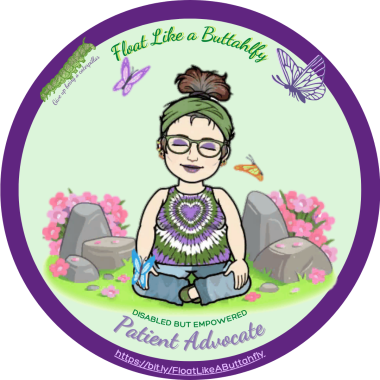The Virtue, Value, and Vitality of Virtual Advocacy

The other day I was surprised by a knock on my door, and even more surprised to hear the response when I asked who it was. It sounded like he said Jamaal Bowman — my congressman. It even sounded like his voice, which I recognized from countless interviews, commercials, and forums.
That can’t be right, I thought. That doesn’t really happen.
I took my hair down from its messy bun, looked down to check my daytime pajamas, and grabbed a KN95 mask. When I opened the door, I was awestruck.
“It’s really you!” I shouted.
“It’s really me,” he answered, and we both laughed. He introduced himself and we talked about some important legislative issues. Before he left, he asked if he could count on my vote, and I happily said yes.
It just seemed so random. No one ever knocks on my door, and most advocacy interactions I’ve had over the years were with my legislators’ staff, not the legislators themselves. But there Bowman was, in a T-shirt and shorts, talking with me about the Safe Step Act (HR 2163) and the Care for All Agenda in my hallway.
I realized a few minutes later that it was basically the opposite of what I’ve been doing for years: I usually go to my elected officials’ offices to introduce myself and talk about important access-to-care legislation. Before I leave, I ask if I can count on their support (and they usually say yes).
Naturally, all that in-person activity came to a halt with the start of COVID-19 shutdowns. In March 2020, my advocacy leadership retreat was converted to a teleconference with just a few days’ notice, and other programs followed suit. It turned out to be a lucky break for me, though. I’d been flaring with severe sarcoidosis symptoms for a couple of weeks and had just conceded that I couldn’t make the trip. Since it became virtual, I could still “attend” from my living room.
I’m working on some of that right now, too. As Arthritis Foundation advocacy chair for New York, I’ve been preparing templates and graphics to help our advocates reach out to their legislators during August recess. Later in the month, I’ll be attending virtual visits with my senators’ offices (and reaching out to Rep. Bowman again) with Rare Disease Legislative Advocates.
I love what I do for so many reasons.
First, it’s important. The only way our elected officials know what matters to us is if we tell them. We literally have the power to influence their actions, which means we have the power to make change. That doesn’t always happen just because we ask, but it will never happen if we don’t.
I spent 15 years working in nonprofit jobs before disability took that away from me. I felt so lost at the time, like I didn’t know who I was if I couldn’t do that anymore. But advocacy helped me find my voice, find my strength, find my “self” again. As a result, I now use the title of “disabled but empowered” patient advocate.

Kerry’s “Float Like a Buttahfly” logo: a disabled but empowered (happy hippie) patient advocate. (Courtesy of Kerry Wong)
The shift to virtual events has been a double-edged sword, though.
So many extraordinary conferences are hosted by prominent organizations around the world that even before COVID-19, I couldn’t go to a fraction of the events that appealed to me. Now, virtual events enable me to attend without the cost (to my body or my wallet) of traveling, and without my husband having to take off time from work to help me.
But the other thing I love about advocacy is meeting with the advocates. Whether at a small, disease-specific meeting or with a group discussing a more comprehensive topic like rare diseases, when we first meet, there is an instant connection. We’ve had similar journeys, live with similar symptoms, and share similar experiences. We listen to one another, learn from one another, and lean on one another. We become family, and these conferences are our family reunions.
While I am truly grateful for the technology that makes webinars, Zoom calls, and virtual conferences possible, they’re nothing like being together in person. From running (or limping) across the room for a hug when I see a sarc sister to sitting together during a session sharing notes and inside jokes, the live events have a family feeling that the virtual events lack.
Over the past few months, I’ve seen many of these organizations and advocates celebrate the return to in-person events. I’m happy for my friends who get to attend, but I’m not yet comfortable being in a crowd, and my doctor still advises against it. I’ll take what I can get, as some of them still offer virtual options, but my sincere hope is co-opted from the end of the Passover seder: “Next year in [person]!”
Note: Sarcoidosis News is strictly a news and information website about the disease. It does not provide medical advice, diagnosis, or treatment. This content is not intended to be a substitute for professional medical advice, diagnosis, or treatment. Always seek the advice of your physician or other qualified health provider with any questions you may have regarding a medical condition. Never disregard professional medical advice or delay in seeking it because of something you have read on this website. The opinions expressed in this column are not those of Sarcoidosis News or its parent company, BioNews, and are intended to spark discussion about issues pertaining to sarcoidosis.








Comments